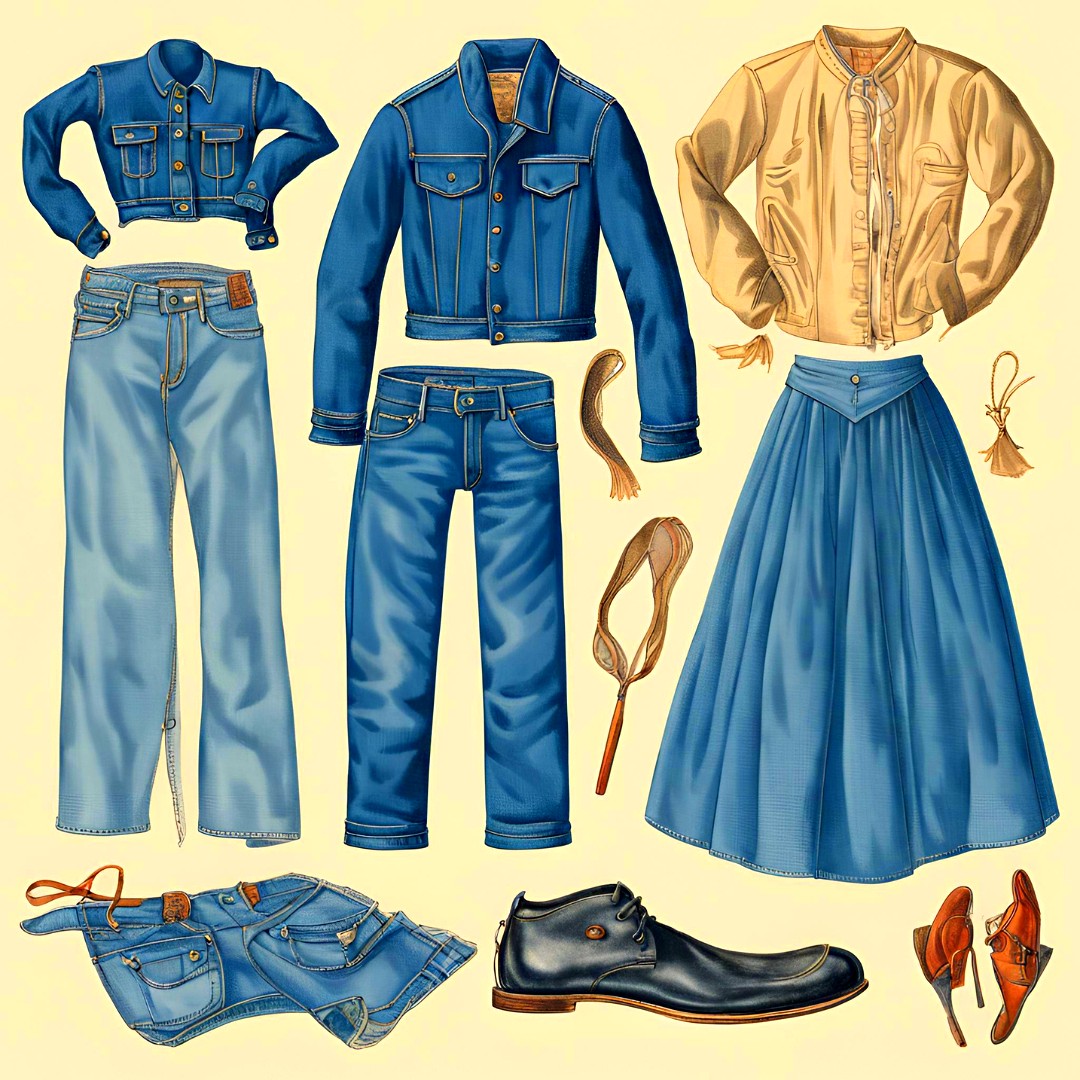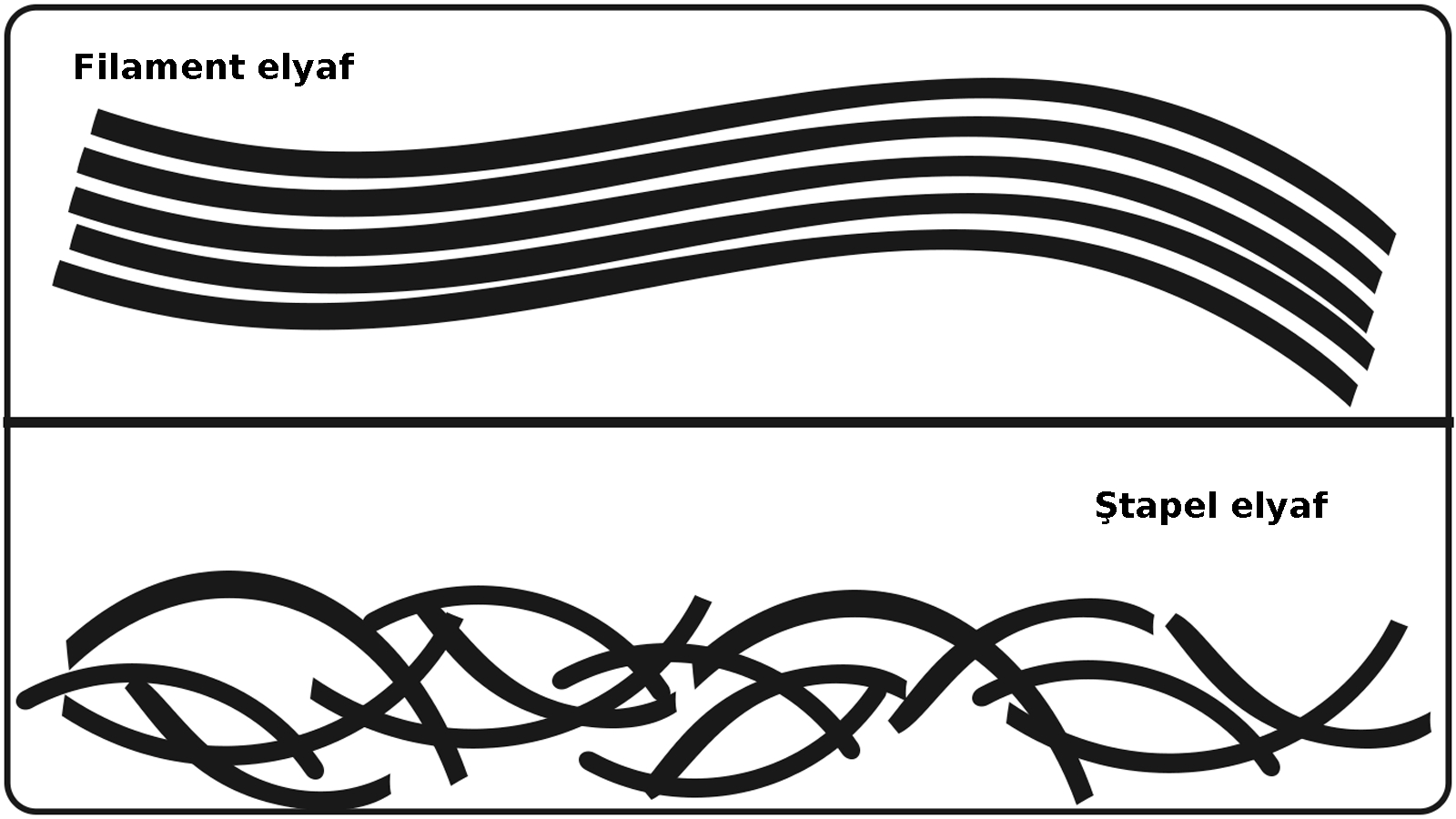 |
| Polymer structure. |
Polymers can be natural, like cellulose found in cotton, or synthetic, like polyester. Both types of polymers have essential roles in modern life, particularly in the textile industry, where their versatility and wide range of characteristics are indispensable.
Polymers in Textiles
In the textile industry, polymers are fundamental to the creation of most fibers, both natural and synthetic. The fibers used in fabrics—whether they are derived from natural sources like cotton, wool, and silk, or synthetically produced fibers like polyester, nylon, and spandex—all consist of polymer chains. The properties of these fibers, such as strength, flexibility, and durability, are a direct result of the polymer chains that make up the fibers.
-
Natural Polymers: These are biopolymers found in nature. For example, cellulose in cotton, keratin in wool and silk, and chitin in fibers like ramie are all natural polymers. These materials have been used for thousands of years for their inherent properties, such as moisture absorption, insulation, and breathability.
-
Synthetic Polymers: These are artificially created polymers, engineered to meet specific needs in fiber properties such as strength, flexibility, and chemical resistance. Polyester, made from polyethylene terephthalate (PET), nylon, derived from polyamide, and polypropylene, made from polyethylene, are common examples of synthetic polymers. These materials are designed to have tailored characteristics for applications in clothing, industrial textiles, and other areas.
Synthetic Polymerization in Fiber Production
In the production of synthetic fibers, individual monomers undergo a chemical process called polymerization, where they are bonded together to form long polymer chains. This process typically requires heat, pressure, and sometimes catalysts. The simplest compounds, like ethylene gas, are transformed into complex polymers like polyethylene through polymerization. The structure of the polymer—the length and arrangement of the chains—ultimately determines the properties of the fiber, such as its strength, stretch, texture, and durability.
Understanding Fiber Behavior
The behavior of fibers, especially how they react to external conditions, is heavily influenced by the polymer composition. Key factors that impact fiber performance include:
-
Dyeability: Different polymers have varying dye affinities. Natural fibers like cotton are easier to dye due to their numerous hydroxyl groups, which interact with dyes. In contrast, synthetic fibers like polyester are more challenging to dye because they lack these functional groups.
-
Heat Resistance: The response of fibers to heat depends on the structure of the polymer chains. Some polymers may soften or melt when exposed to heat, while others may char or degrade. Heat resistance is a key factor in determining the fiber's suitability for different applications, such as outdoor clothing or industrial uses.
-
Strength and Elasticity: The tensile strength (resistance to stretching) and elasticity (ability to return to original shape after stretching) of a fiber are influenced by the chemical bonds and structure of the polymer chains. Stronger bonds and well-organized chains generally result in stronger and more durable fibers.
Polymer Chain Entanglement and Fiber Properties
The physical properties of fibers are largely determined by how polymer chains interact and entangle with each other. A fiber's internal structure is a combination of two main regions:
- Crystalline Regions: In these areas, polymer chains are packed tightly in an ordered manner, providing the fiber with strength and rigidity.
- Amorphous Regions: These regions are less ordered and allow the fiber to have elasticity and flexibility.
The balance between these regions influences the flexibility and resilience of the fiber. The longer the polymer chains, the stronger the fiber will be, as the increased chain length contributes to better intermolecular interactions. Polymer chain entanglement is also critical for the fiber's flexibility, helping to avoid brittle fractures and providing the material with some stretch or elasticity.
Fiber to Polymer Type Relationships
The properties of different fibers are directly linked to the type of polymer they are made from. Here’s a breakdown of some common fibers and their corresponding polymers:
-
Cotton → Cellulose: Cotton fibers are composed of cellulose, a natural polymer found in plants. Cellulose provides cotton with its softness, breathability, and moisture-wicking properties. This is why cotton fabrics are commonly used for casual clothing and home textiles.
-
Polyester → Polyethylene Terephthalate (PET): Polyester is a synthetic fiber made from polyethylene terephthalate (PET). PET is a thermoplastic polymer, and polyester fibers are known for their durability, resistance to wrinkles, and ability to retain shape. Polyester is widely used in clothing, home furnishings, and industrial textiles.
-
Rayon → Cellulose: Rayon is made from regenerated cellulose, derived from natural sources like wood pulp. The cellulose is chemically processed into fibers, making rayon a semi-synthetic fiber. Rayon has a smooth texture and high absorbency, making it a popular choice for clothing such as blouses, dresses, and linings.
-
Nylon → Polyamide: Nylon, a synthetic fiber, is made from polyamide. Known for its strength and elasticity, nylon is used in a variety of applications such as hosiery, activewear, and industrial fabrics. Nylon 6 and Nylon 66 are common types of nylon polymers used in fiber production.
-
Acrylic → Polyacrylonitrile: Acrylic fibers are made from polyacrylonitrile (PAN). Acrylic is known for its softness, lightweight nature, and resemblance to wool. Acrylic fibers are often used in outerwear, knitwear, and blankets.
-
Acetate → Cellulose Diacetate: Acetate fibers are made from cellulose diacetate, a modified form of cellulose. Acetate is prized for its luxurious appearance, shine, and drape, often found in formalwear, linings, and evening garments.
-
Olefin → Polyethylene or Polypropylene: Olefin fibers are made from polyethylene or polypropylene, both of which are types of polyolefin polymers. Olefin fibers are known for their lightweight nature, moisture-wicking properties, and resistance to mildew, often used in activewear, outdoor textiles, and carpeting.
-
Wool → Alpha Keratin: Wool fibers are made from alpha keratin, a natural protein polymer found in the hair of sheep and other animals. Wool is prized for its insulating properties, elasticity, and ability to absorb moisture. It is commonly used in outerwear, suits, and sweaters.
-
Silk → Fibroin: Silk fibers are made from fibroin, a natural protein polymer secreted by silkworms. Silk is known for its luxurious feel, sheen, and drapability. Silk fabrics are typically used for formalwear, evening gowns, and high-end textiles.
-
Spandex → Polyurethane: Spandex (also known as Lycra or Elastane) is made from polyurethane. Spandex fibers are incredibly elastic, stretching up to five times their original length, making them ideal for activewear, swimwear, and performance costumes.
-
Aramid → Polyamide: Aramid fibers, like Kevlar and Nomex, are made from polyamide. These fibers are known for their high strength and heat resistance, making them ideal for protective clothing, body armor, and fire-resistant fabrics used in military and firefighting uniforms.
-
Modacrylic → Polyacrylonitrile Copolymer: Modacrylic fibers are made from a copolymer of polyacrylonitrile and other components. These fibers are flame-resistant, soft, and lightweight, commonly used in faux fur, flame-resistant fabrics, and outdoor wear.
-
Polyethylene (PE) → Polyethylene: Polyethylene fibers are made from polyethylene (PE), which is the most common plastic polymer. HDPE (High-Density Polyethylene) and LDPE (Low-Density Polyethylene) fibers are used for industrial fabrics, ropes, and geotextiles due to their strength and chemical resistance.
-
Polyvinyl Chloride (PVC) → Polyvinyl Chloride: PVC fibers are made from polyvinyl chloride. These fibers are waterproof, chemical resistant, and often used in outdoor gear, protective clothing, and rainwear.
-
Tencel (Lyocell) → Cellulose: Tencel (brand name for Lyocell) is a fiber made from wood pulp and is a regenerated cellulose fiber, much like rayon. Tencel is known for being environmentally friendly, soft, and moisture-wicking, and it is used in apparel and home textiles.
Specialty Synthetic Fibers and Their Properties
In addition to standard synthetic fibers, there are also specialty fibers designed for unique applications. These fibers are often engineered with specific properties, such as flame resistance, UV resistance, or antibacterial performance, to meet particular industry needs. To achieve these specialized characteristics, pendant groups (additional atoms or molecules attached to the polymer backbone) may be introduced into the polymer structure.
For instance:
- The addition of nitrogen-containing groups can enhance the flame resistance of a fiber.
- Amine or carboxyl groups can improve the fiber's dyeability, making it more compatible with certain dyeing techniques.
- Some fibers are treated with antibacterial agents to reduce microbial growth, which is essential in medical textiles or activewear.
These innovations make it possible to develop fibers for specialized uses, such as in protective clothing (e.g., body armor) or fabrics that need to withstand extreme conditions.
Fiber Manufacturing Methods
The process of creating fibers from polymers varies and depends on the desired characteristics and end-use of the material. There are three primary methods for extruding synthetic fibers:
- Dry Spinning: In this method, the polymer is dissolved in a solvent and then forced through a spinneret into warm air, where the solvent evaporates and the fiber solidifies. Acrylic and spandex are examples of fibers commonly produced using dry spinning. For example, spandex, a highly elastic fiber, is created from the polymer polyurethane via dry spinning. This method is suitable for polymers that are soluble in organic solvents and require precise control over fiber formation.
-
Wet Spinning: In wet spinning, the polymer is dissolved in a liquid solvent and extruded into a coagulating bath, where it hardens into fibers. Rayon and acetate are examples of fibers produced by wet spinning. Rayon, made from cellulose, is produced using wet spinning, where the cellulose is dissolved in a chemical solvent, extruded into a bath, and regenerated as fiber. This method is ideal for fibers that require a liquid coagulation process, especially when dealing with polymers that are not easily processed by other methods.
-
Melt Spinning: In melt spinning, the polymer is heated until it melts, then extruded through a spinneret and cooled to form solid fibers. Polyester, nylon, and polypropylene are commonly produced through melt spinning. For instance, polyester fibers, made from polyethylene terephthalate (PET), are created by melting the polymer and then extruding it into fibers. This method works well with polymers that can be melted without decomposing and are stable at high temperatures.
Each of these spinning methods impacts the fiber's structure, such as its cross-section, strength, and flexibility. The choice of spinning method is influenced by the intended application of the fiber, from fabrics used in everyday clothing to those engineered for specialized industrial functions.




















































































































1 yorum:
excellent..
Yorum Gönder
Merhaba, daha kaliteli bir site için yorumlarınızı bekliyoruz.